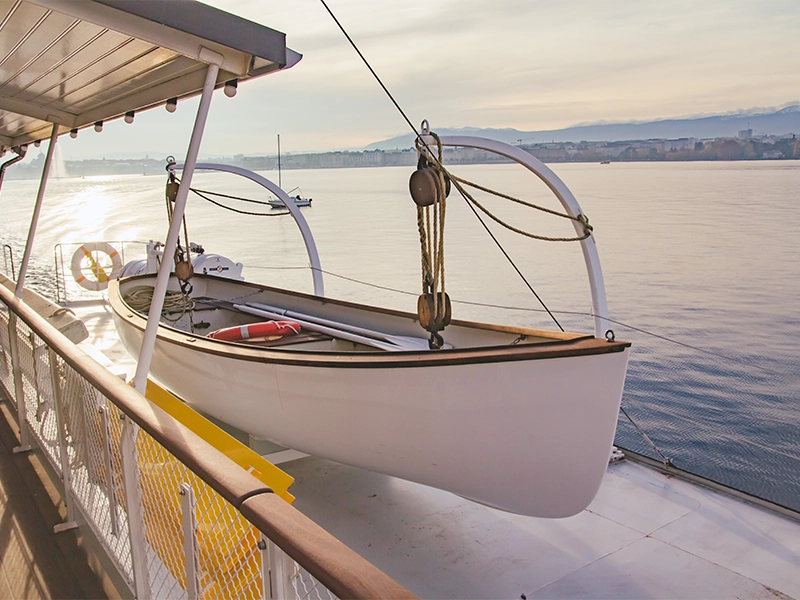
Dinghies
Dinghies are an important means of rescuing persons who have entered the water. To use a boat as a dinghy for inland navigation, a boat must be certified according to the standard NEN-EN 1914:2016.This standard describes all the requirements and tests that a
dinghy must meet and what tests must be performed to prove it. DCI is accredited to assess a boat according to NEN-EN 1914:2016 and if all requirements are met, certify it as an inland waterway dinghy. In this process, DCI issues a type certificate to the builder showing that the dinghy meets the requirements.
Some key requirements from NEN-EN 1914:2016 are described below.
With this, an initial check can be done to see if the boat meets the specified requirements. But it is always advisable to go through the complete standard NEN-EN 1914:2016 to get a good idea of what the requirements are.

Design check!
| Symbol | Meaning | Unit of Measurement |
|
AR |
Reserve Buoyancy | kN |
|
B |
Overall Breadth | m |
|
Fb |
Freeboard | m |
|
FR |
Residual Freeboard | m |
|
H |
Height measured at 0.5 L from lower edge of hull to upper edge of boat’s side | m |
|
L |
Overall Length | m |
|
TF |
Deadweight | kg |
|
V |
Boat Volume | m³ |
The main dimensions and the deadweight TF shall conform to the following ratios:
1 The freeboard Fb of the fully equipped boat loaded to its deadweight shall be at least 0.25 m.
2 The boat volume V shall be determined by Simpson’s rule or by another equivalent method and shall be at least 1,5 m3 or the product of L × W × H shall be not less than 2,7 m3.
3 Reserve buoyancy AR The buoyancy of the boat shall be ensured by buoyancy units. The reserve buoyancy AR of the unmanned flooded boat shall be at least: AR ≥ 0.3 kN/m3 × L × W × H The reserve buoyancy shall be distributed evenly throughout the boat.
4 The stability is regarded as adequate if a residual freeboard of at least 0.1 m remains on a fully equipped boat
5 The permissible number of persons depends on the deadweight, boat volume and number of seats. Boats shall be provided with seats for at least three persons. At least 0,4 m3 of boat volume, 0,45 m seat width and 100 kg deadweight shall be provided for each person. The lowest value is the decisive one. The depth of the seating area on benches, seats or buoyancy units shall be at least 0.45 m and on thwarts at least 0.25 m.
6 Materials shall be resistant to sea water and mineral oil or they shall be permanently protected and weatherproofed accordingly. Materials shall be resistant to UV light and resistant to temperatures from – 20 °C to +70 °C. Materials for the hull shall be flame-retardant (at least B 15 according to IMO Resolution MSC 61 (67)). In the case of fibreglass-reinforced plastics, proof is required both for the material and for the laminate assembly. Materials for inflatable boats shall meet the requirements of EN ISO 6185 in accordance with their motor rating

